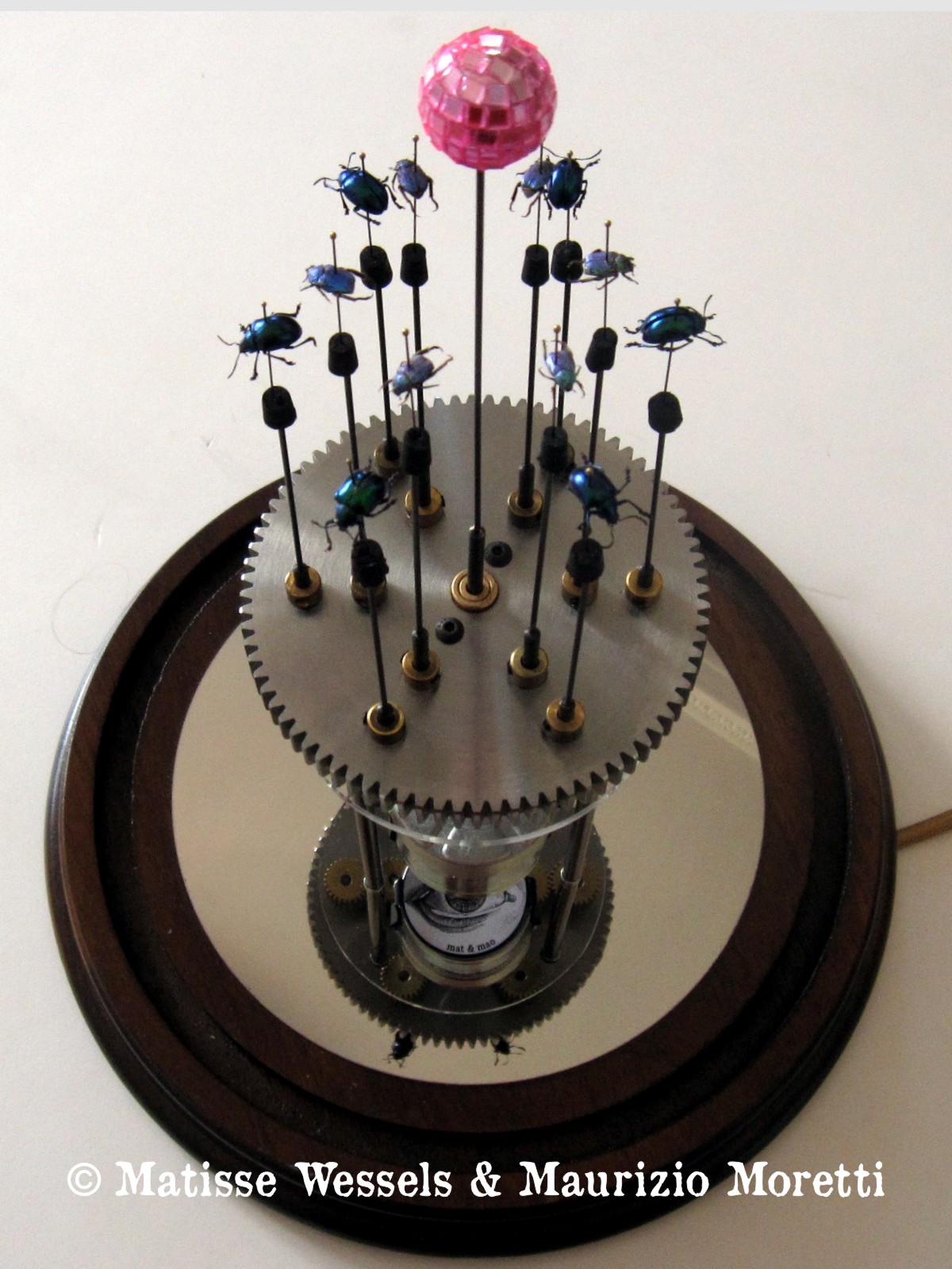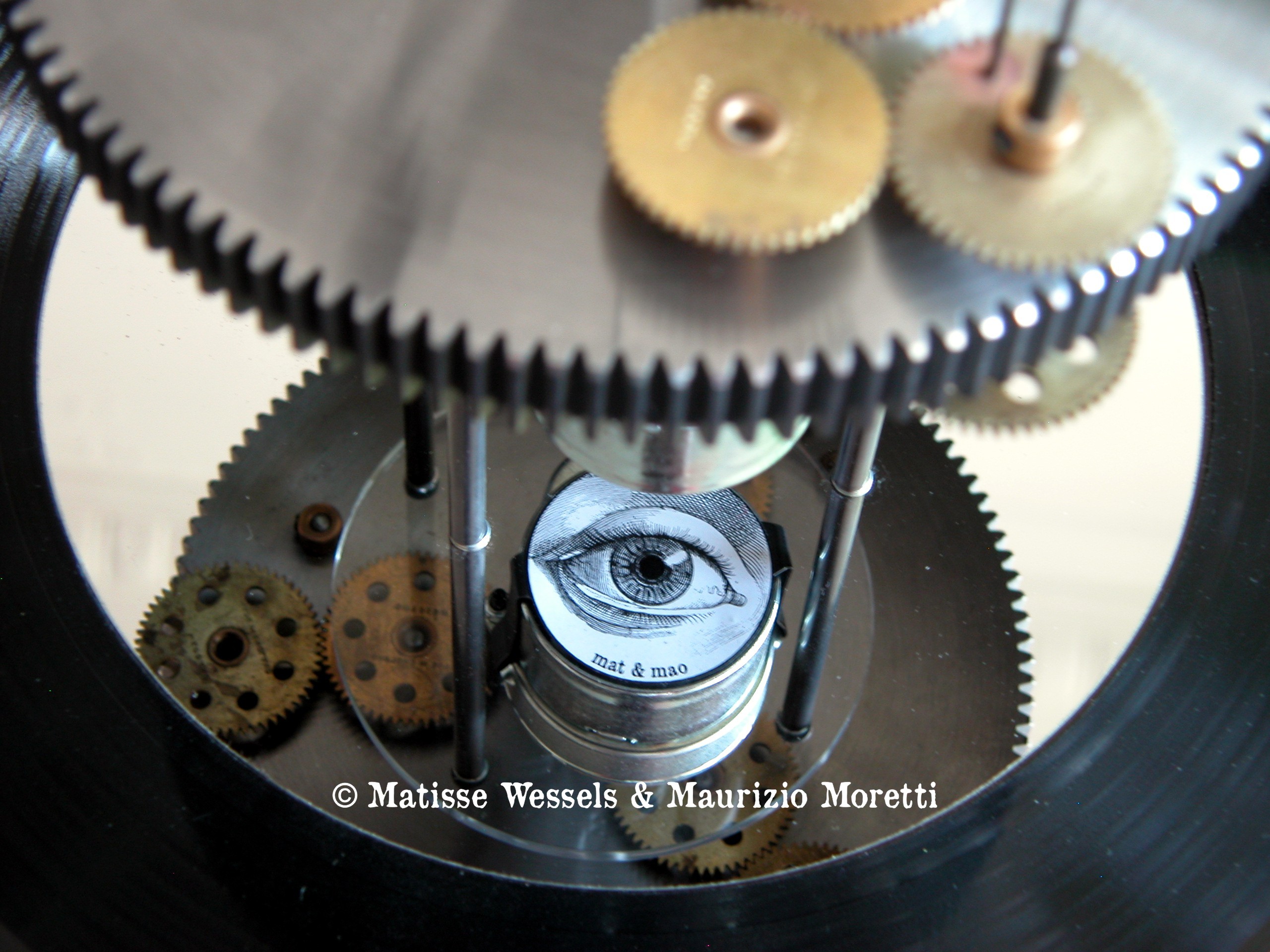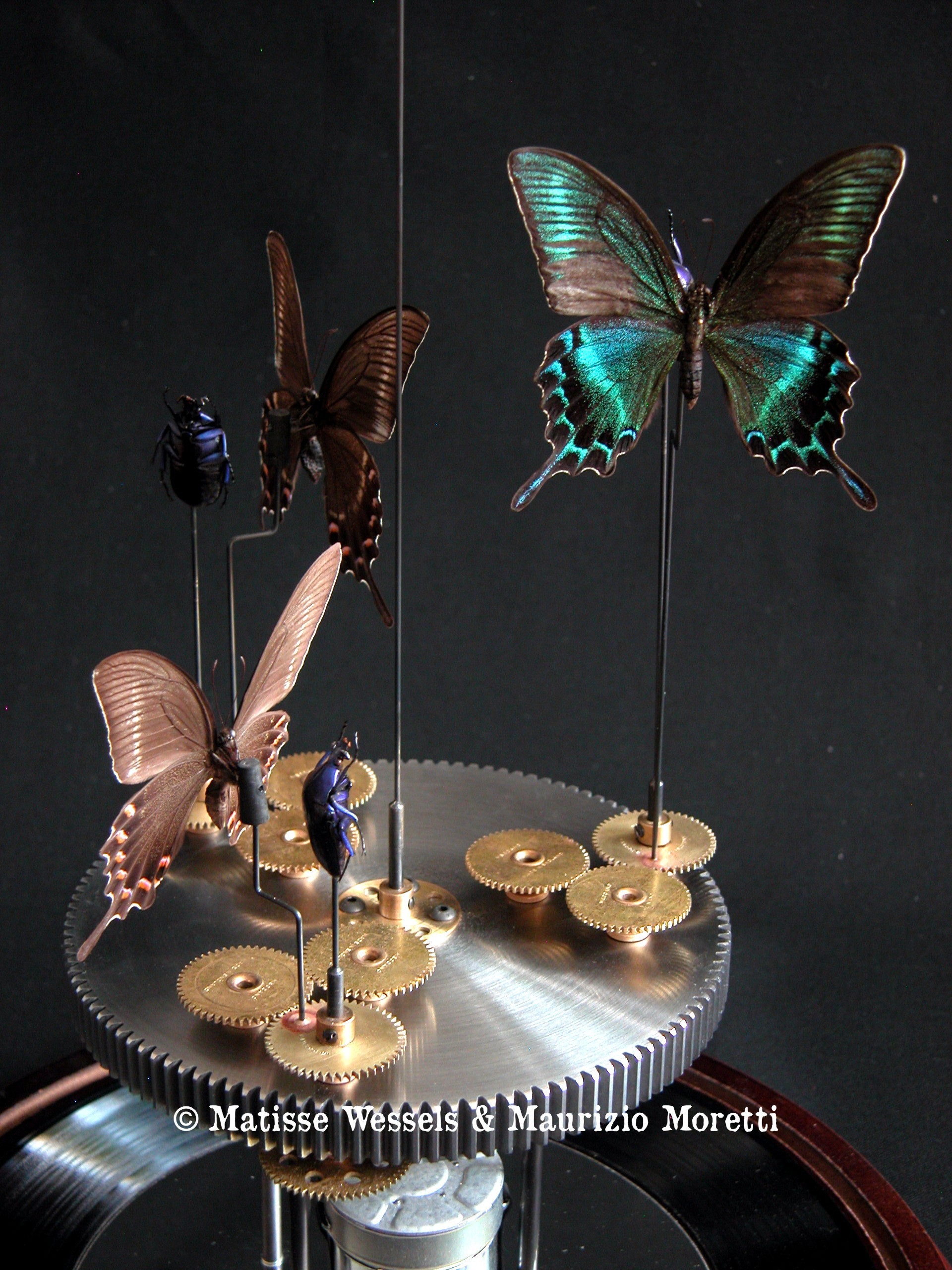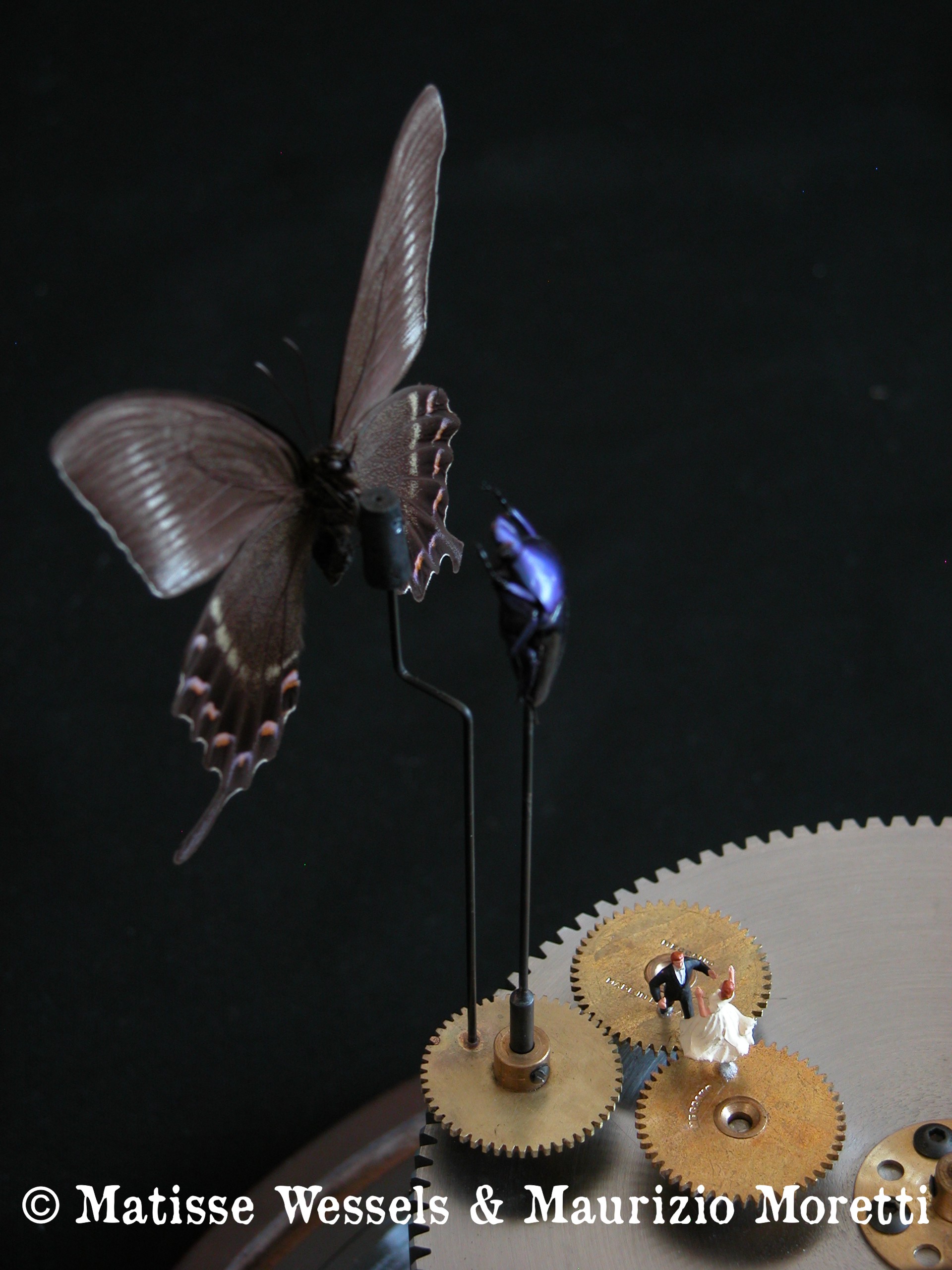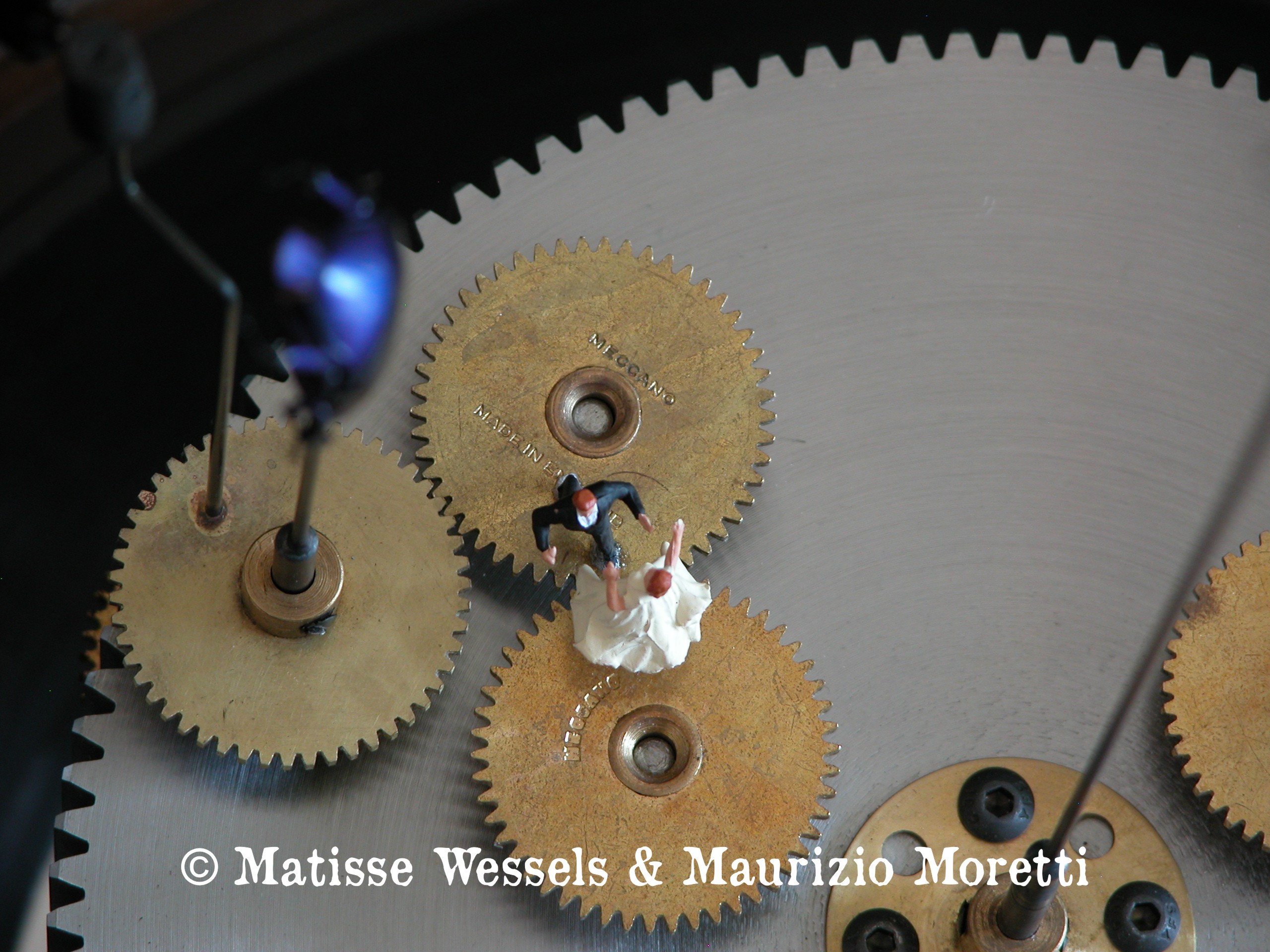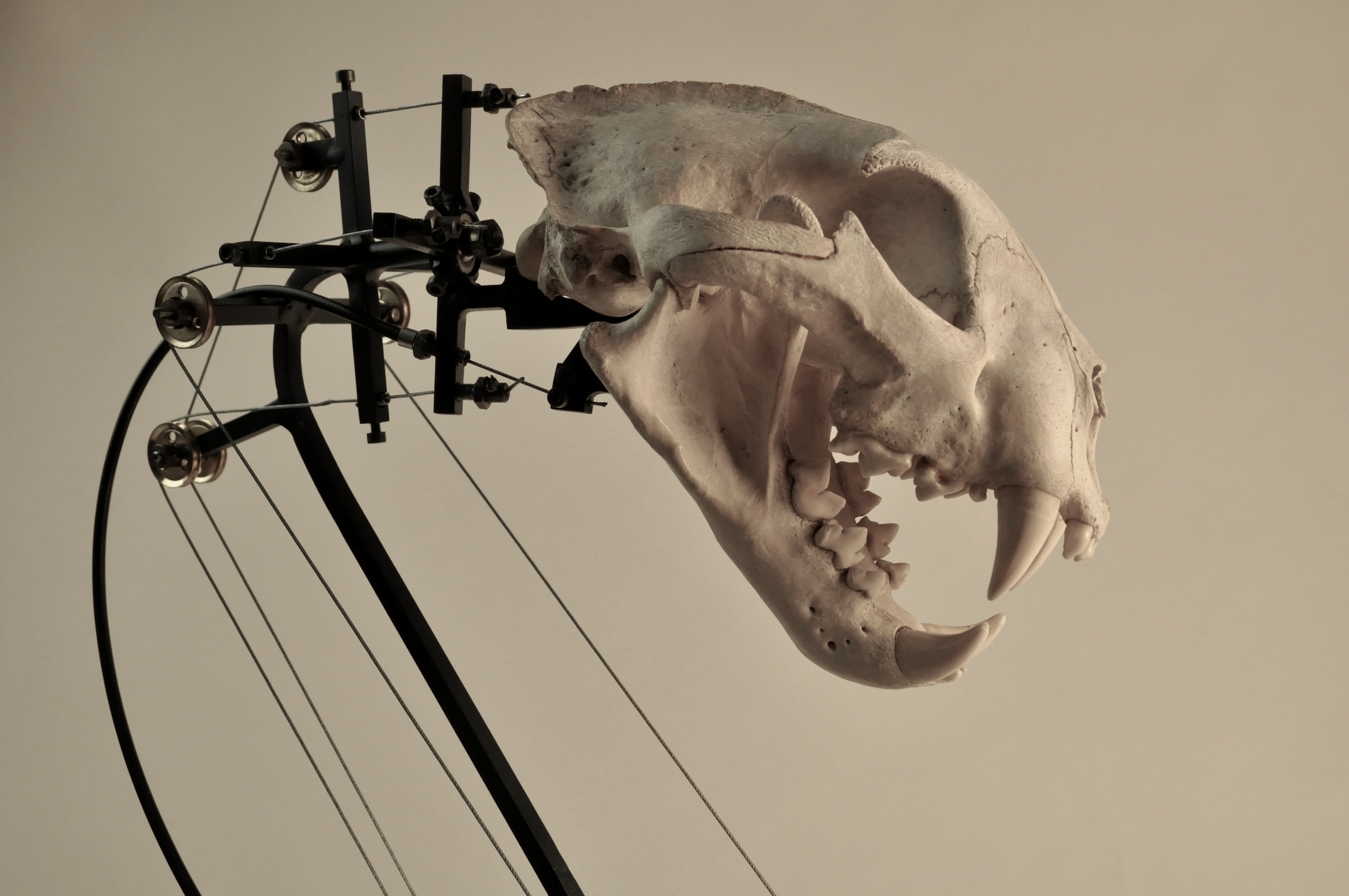Scroll down for English!
Mat&Mao sono studiosi, inventori, ricercatori, scienziati, collezionisti di carte geografiche (e non solo), e viaggiatori vecchio stile, o meglio esploratori di cose sconosciute in mondi conosciuti.
Pensate alle wunderkammern con le più bizzarre rarità del passato per avere un’idea.
Come duo artistico si esprimono principalmente in una direzione: da veri creatori quali sono di un mondo sotterraneo, rianimano ciò che un tempo era in vita, in un susseguirsi di narrazioni e interazioni forzate dal loro punto di vista.
Non creano dal nulla, ma da ciò che è conservato nella memoria (individuale o collettiva), o a livello fisico (strutturale, corporeo).
Dallo spropositatamente smisurato al microscopico infinitesimale.
Mat&Mao, in una fetta della loro giornata, fanno parte di un collettivo di teatro di strada francese che crea marionette giganti, LES GRANDES PERSONNES, con sede istituzionale in un hangar alle porte di Parigi, ma con cuore itinerante a seguire festival, spettacoli e parate in giro per il mondo. Insieme hanno sperimentato incredibili avventure spostandosi di Paese in Paese, interagendo con i locali di cui tramandano le storie negli spettacoli stessi: in Algeria (Orano, Akbou), Brasile (São João-del Rei), Burkina Faso (Boromo), Cile (Valparaiso), Congo (Kinshasa), Haiti (Jacmel), Corea (Ansan), Lesotho (Maseru), Marocco (Salé, Tameshlote), Nigeria (Calabar), Sudafrica (Johannesburg, Grahamstown).
Mat (Matisse Wessels) è ideatrice di costumi, disegna maschere ed espressioni facciali delle marionette giganti; mentre Mao (Maurizio Moretti), ingegnere aerospaziale, inventa i meccanismi per manovrare marionette indossabili alte fino a 4 metri.
Mat&Mao, in un’altra fetta di giornata che non è dedicata a studiare, archiviare, disegnare, scoprire, creano i loro lavori, chiamati MÉCANOTROPES, incentrati sulla bellezza, delicatezza e fragilità dell’infinitamente piccolo in movimento.
Insetti e teschi vengono riportati in vita, in una danza senza tempo e senza musica che non ha nulla di macabro. A volte si rincorrono, soprattutto negli ultimi lavori con roditori e farfalle, in un infinito prova a prendermi, se ci riesci – come mi spiega Mao.
Meravigliosi meccanismi a vista, all’interno di una campana di vetro che li protegge dal chiassoso quotidiano, fanno incontrare a intervalli programmati, seguendo traiettorie predefinite, preziosi insetti (rigorosamente defunti: nessun insetto è mai stato maltrattato).
Cercando tra insetti contemporanei si vede che, benché il mondo degli entomologi – artisti potrebbe sembrare popolato da tipi strani e fuori moda, ne escono fuori di molto famosi: un temibile Damien Hirst, dopo squali e mucche sezionati sotto formaldeide, e teschi tempestati di diamanti, ha composto rosoni, nel vero senso di vetrate da chiesa, con i suoi Kaledoiscope paintings utilizzando migliaia di ali di farfalle diverse per forme e colori. Ma oltre a Hirst c’è anche il fotografo svedese Magnus Muhr che letteralmente spiazza con la sua comicità da burattinaio di mosche.
I MÉCANOTROPES di Mat&Mao sono la manifestazione di bellezze perdute o nascoste, del lato segreto di esseri poco considerati (coleotteri, ovvero scarafaggi), oppure rari (come farfalle di paesi lontani). Siamo all’avanguardia dell’esposizione di un entomologo.
In loro spesso riecheggia l’opera di Dürer e l’accuratezza tipica della pittura nordica rinascimentale: nell’Adorazione dei Magi agli Uffizi, udite udite, vi è una danza di due farfalle e un coleottero (benché alcuni lo chiamino grillo) intorno al fiore ai piedi di Maria.
Dunque Mat&Mao, nell’unicità del loro operare, con i loro MÉCANOTROPES si inseriscono in una linea di tendenza e di ricerche molto attuale, con un gusto che sa di antico ma esteticamente e tecnicamente avanzato.
Guardare le immagini e i link a foto e video per credere.
Come vi è venuto in mente di unire insetti a meccanismi?
L’idea nasce dalla frustrazione di vedere gli animali impagliati o disseccati in posizione statica. Metterli in movimento è un po’ come rimetterli in vita. Mettere in moto gli insetti permette anche di apprezzare i colori cangianti delle ali e soprattutto il verso. Gli insetti in bacheca sono esposti per forza sul recto e non se ne vede mai il verso che a volte è altrettanto interessante. La spinta finale a cominciare questo progetto è venuta dopo la fine di un cantiere di restauro di alcuni automi al museo delle giostre di Parigi. Alcuni vecchi automi dei giostrai riproducono i movimenti di uomini e animali, e la passioni per la meccanica e le scienze naturali ci hanno spinti a combinarle insieme.
Parlatemi dei meccanismi…
Ogni tipo di meccanismo “antico”. La parola d’ordine è: niente elettronica. Pensiamo forse di togliere anche il motore e passare a una manovella per avere un sistema il più affidabile possibile.
Siamo affascinati dai meccanismi planetari a ruote dentate e dai meccanismi a leva e ci ispiriamo da una bella collana di libri di meccanica di un professore russo degli anni ’70 che aveva archiviato tutti i meccanismi inventati fino ad allora!
Chi fa cosa?
Mat si occupa della scelta e della messa in scena degli esemplari ed io [Mao] traduco il tutto in meccanica. L’assemblaggio lo facciamo insieme: dalla preparazione dei pezzi meccanici all’installazione degli esemplari.
Dove cercate gli insetti?
Gli insetti li compriamo in negozi da tassidermia a Parigi o in Olanda. In un primo momento eravamo focalizzati solo sugli insetti ma ora cerchiamo di integrare anche scheletri di piccoli mammiferi. La struttura portante degli animali è incredibilmente complessa e funzionale ma è sempre nascosta. Il Mecanotrope è una vetrina per metterne in risalto tutta la bellezza meccanica ed estetica.
Mat & Mao. From Les Grandes Personnes to the Mécanotropes
Mat&Mao are not only researchers, scientists, inventors and map collectors, but also old fashioned travellers, exploring unknown things in a world that is fast becoming too well known.
Try imagining a wunderkammern where bizzarre rarities from the past have been collected and you can start getting the picture.
As an artistic duo, they express themselves by breathing energy into what once had a life of its own, like true craftsmen from an underworld dimension, in a number of successively interactive and personal narrations. Their creations are taken from collective and individual memory or shaped out of preserved form.
From the disproportionally gigantic to the microscopically minute.
For Mat&Mao the day is partially spent creating giant puppets for a French Street Theatre Collective called LES GRANDES PERSONNES, of which they are part. As a travelling act the company partecipates in shows, festivals and parades around the world, returning to their hangar headquarters on the outskirts of Paris at the end of each journey. Together they have experienced incredible adventures in Algeria (Oran, Akbou), Brazil (São João-del Rei), Burkina Faso (Boromo), Chile (Valparaiso), Congo (Kinshasa), Haiti (Jacmel), Korea (Ansan), Lesotho (Maseru), Morocco (Salé, Tameshlote), Nigeria (Calabar) and South Africa (Johannesburg, Grahamstown), getting a chance to meet local people and share their stories.
Mat (Matisse Wessels) is a costume designer, drawing masks and facial expressions for the giant puppets. Mao (Maurizio Moretti) instead, as an aerospace engineer, invents mechanisms to maneuver these wearable marionettes that can be up to four meters tall.
The remaining time that is not taken up by travel and discovery is dedicated to their works called MÉCANOTROPES, works that focus on the beauty, delicacy and fragility of the infinitely small in motion. Insects and skulls are brought back to life in a timeless and musicless dance that has nothing of the macabre. Recent works show rodents and butterflies sometimes chasing one another – as Mao explained to me – in an infinte game of catch me if you can. Wonderful mechanisms that can be admired beneath bell glass, away from the noises of everyday life, bringing together precious insects that follow predefined trajectories within carefully architected routine patterns (all their creations are rigoursoly not alive and no insect has ever been mistreated).
Search for other contemporary insects brought up a number of very famous ones, revealing also how the world of artistic entomologists seems to be populated by eccentric and unconventional figures such as the fearsome Damien Hirst, that after dissecting sharks and cows in formaldehyde and creating diamond-encrusted skulls, composed medieval-like rose window works called Kaledoiscope paintings, using thousands of butterflies wings of different shapes and colors, or the Swedish photographer Magnus Muhr that places flies in his comic strips.
The MÉCANOTROPES are the manifestation of a lost or hidden beauty, the secret side of beings that are seldom considered (beetles and cockroaches) or very rare (such as butterflies from distant lands). This is the avant-garde revelation of an entomologist’s secrets. Somehow their work echoes that of Dürer and the characteristic accuracy of Northern Renaissance paintings, an example being the Adoration of the Magi in the Uffizi in Florence, where – hear, hear – a dance of two butterflies and a beetle (though some call it a cricket) around a flower is clearly visible at Mary’s feet.
With the uniqueness of their MÉCANOTROPES Mat&Mao are part of a current research trend that maintains elements of old within an aestethically and technically present-day frame. See pics and links to photos and videos to get an idea.
How did you come up with the idea of combining insects and mechanisms?
The idea was born from frustration at seeing stuffed or dried animals in static positions. Putting them in motion is a little like giving them a new life. Setting insects in motion allows you also to appreciate the irridescent colours of their wings, especially from behind. Insects displayed in showcases are necessarily exposed with their bottom side up (recto), not allowing you to see their back (verso) that is often the most interesting part. The final spur that got this project going came after restoring a number of automatons at the Museum of the Rides in Paris. Some old automatons of merry-go-rounds reproduced the movements of men and animals, this coupled with our passion for mechanical engineering and the natural sciences simply led us to combine these parts together.
Tell me something more about the mechanisms …
We love each and every type of ancient mechanism. The slogan is: no electronics. We are now thinking to remove the engines and change them with cranks so as to have the most reliable system possible. We are fascinated by planetary gear and lever mechanisms. What got our inspiration going were a beautiful series of books on mechanics by a Russian professor during the 70’s who had recorded all the different mechanisms that had been invented up to that time!
Who does what?
Mat is responsible for choosing and staging the models while I [Mao] add the mechanical elements. Ultimately we make the assemblage together: from the preparation of the mechanical parts up to their installation.
Where do you find the insects?
We buy the insects at taxidermy stores in Paris or around Holland. At first we focused on insects but the aim now is to integrate these with the skeletons of small mammals. The supporting structure of the animals is incredibly complex but always hidden. The MÉCANOTROPES is a showcase to highlight mechanical and aesthetic beauty as a whole.



